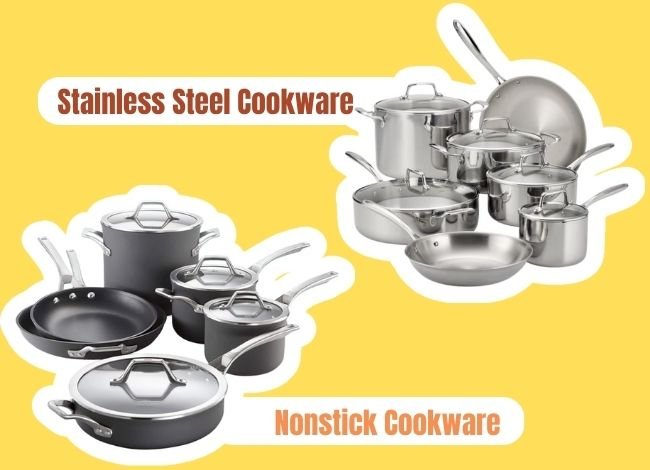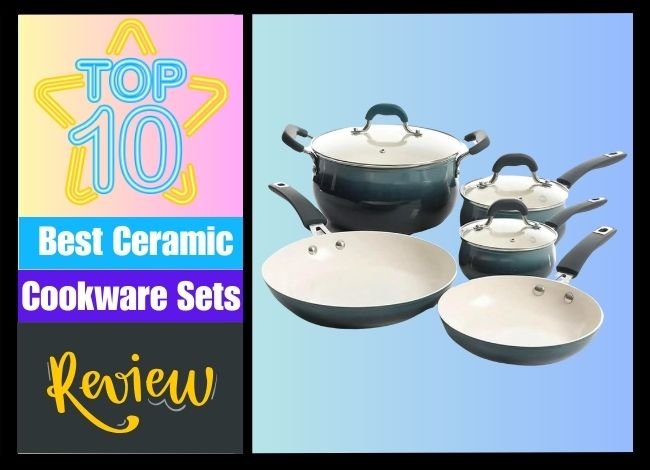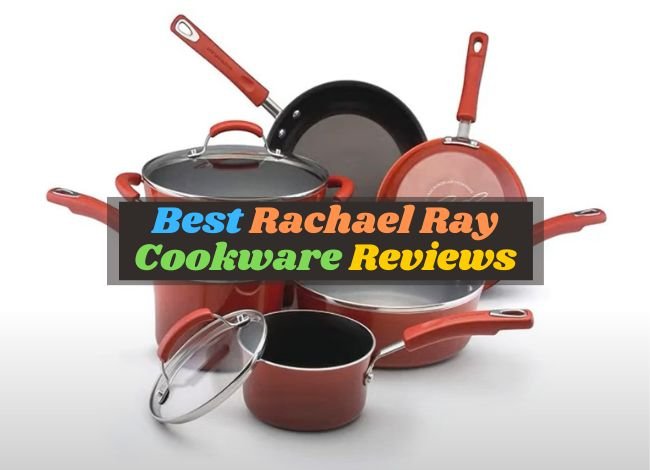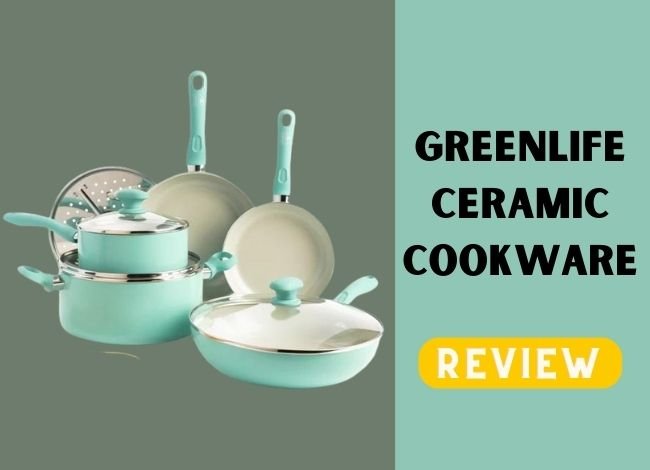Last Updated on January 10, 2024
Nonstick and stainless steel cookware are two popular options that many home cooks and professional chefs consider. Each type has pros and cons, making it challenging to decide which option is better. In this in-depth review, we’ll compare nonstick and stainless steel cookware and provide a comparison table to help you make an informed decision.
Comparison Table: Nonstick vs. Stainless Steel Cookware:
Feature |
Nonstick Cookware |
Stainless Steel Cookware |
|---|---|---|
| Material | Metal base with nonstick coating (ceramic, PTFE, etc.) | Stainless steel, often with aluminum or copper core |
| Heat Conductivity | Good | Good to excellent, depending on the core material |
| Even Heat Distribution | Good | Excellent |
| Non-Stick Capability | Excellent | Poor, unless coated |
| Durability | Moderate | High |
| Reactivity with Food | Non-reactive | Non-reactive |
| Oven Safe Temperature | Varies, generally lower | Up to 600°F (315°C) or higher |
| Dishwasher Safe | Varies, usually not recommended | Yes, depending on the collection |
| Induction Compatibility | Varies, requires a magnetic base | Yes, depending on the collection |
| Price Range | $-$$$ | $$-$$$$ |
Related Article Here:
- Stainless steel vs. nonstick cookware: Which should you get?
- Ceramic vs Stainless Steel Cookware: Which Is Better?
- All-Clad vs. Calphalon: How Does Their Cookware Compare?
- Calphalon vs. Cuisinart: Which Cookware Is Better?
Features and Advantages
- Material: Nonstick cookware features a metal base, typically aluminum, with a nonstick coating such as ceramic or PTFE. Stainless steel cookware is made of stainless steel, often with an aluminum or copper core, for better heat conductivity.
- Heat Conductivity and Distribution: Nonstick cookware provides good heat conductivity and even heat distribution, while stainless steel cookware with an aluminum or copper core offers even better heat distribution and conductivity.
- Non-Stick Capability: Nonstick cookware boasts excellent non-stick capabilities, making it ideal for cooking delicate foods and using minimal oil. Stainless steel cookware tends to be less non-stick unless coated with a non-stick material.
- Durability: Stainless steel cookware is highly durable, and resistant to rust, staining, and corrosion. Nonstick cookware is more prone to scratching, and its non-stick coating may degrade over time, affecting its performance.
- Reactivity with Food: Both nonstick and stainless steel cookware is non-reactive, ensuring they won’t react with acidic or alkaline foods and alter their taste or quality.
- Oven Safe Temperature: Stainless steel cookware can generally withstand higher oven temperatures, up to 600°F (315°C) or higher. Nonstick cookware is typically safe at lower oven temperatures, but the exact temperature limit varies depending on the specific product.
- Dishwasher Safe: Stainless steel cookware is often dishwasher safe, while nonstick cookware may not be recommended for dishwasher use due to the risk of damaging the non-stick coating.
- Induction Compatibility: Stainless steel cookware is typically compatible with induction cooktops, while nonstick cookware requires a magnetic base to work on induction cooktops.
- Price Range: Nonstick cookware is generally more affordable, with a price range of $ to $$$, while stainless steel cookware ranges from $$ to $$$$.
Conclusion
Choosing between nonstick and stainless steel cookware ultimately depends on your specific needs, preferences, and budget. Nonstick cookware is an excellent choice if you prioritize easy cleaning, non-stick capabilities, and using minimal oil in your cooking. However, stainless steel cookware may be the better option if you value durability, even heat distribution, and versatility for various cooking techniques.
Nonstick cookware is perfect for those who frequently cook delicate foods like eggs, pancakes, or fish, as the non-stick coating prevents these foods from sticking to the pan. Additionally, nonstick cookware is ideal for those who want to cook with less oil or butter, making it a popular choice for health-conscious cooks. It’s essential to be cautious with nonstick cookware and use non-abrasive utensils to prevent damage to the non-stick surface. Over time, the non-stick coating may degrade, requiring replacement more frequently than stainless steel cookware.
Stainless steel cookware is well-suited for a wide range of cooking techniques, including browning, deglazing, and high-heat cooking. It is more durable and long-lasting, often justifying its higher price tag. One downside of stainless steel cookware is that it can be less non-stick, but it can still deliver excellent cooking results with proper preheating and oil usage. Stainless steel cookware is a great investment for your kitchen, as it lasts longer and maintains its appearance over time.
In conclusion, the decision between nonstick and stainless steel cookware will depend on your cooking style, priorities, and budget. Nonstick cookware is an excellent choice for easy-to-clean, non-stick cooking, while stainless steel cookware offers durability, even heat distribution, and versatility for various cooking techniques. Consider your specific needs and preferences when deciding, and you will find the perfect cookware to suit your kitchen.




